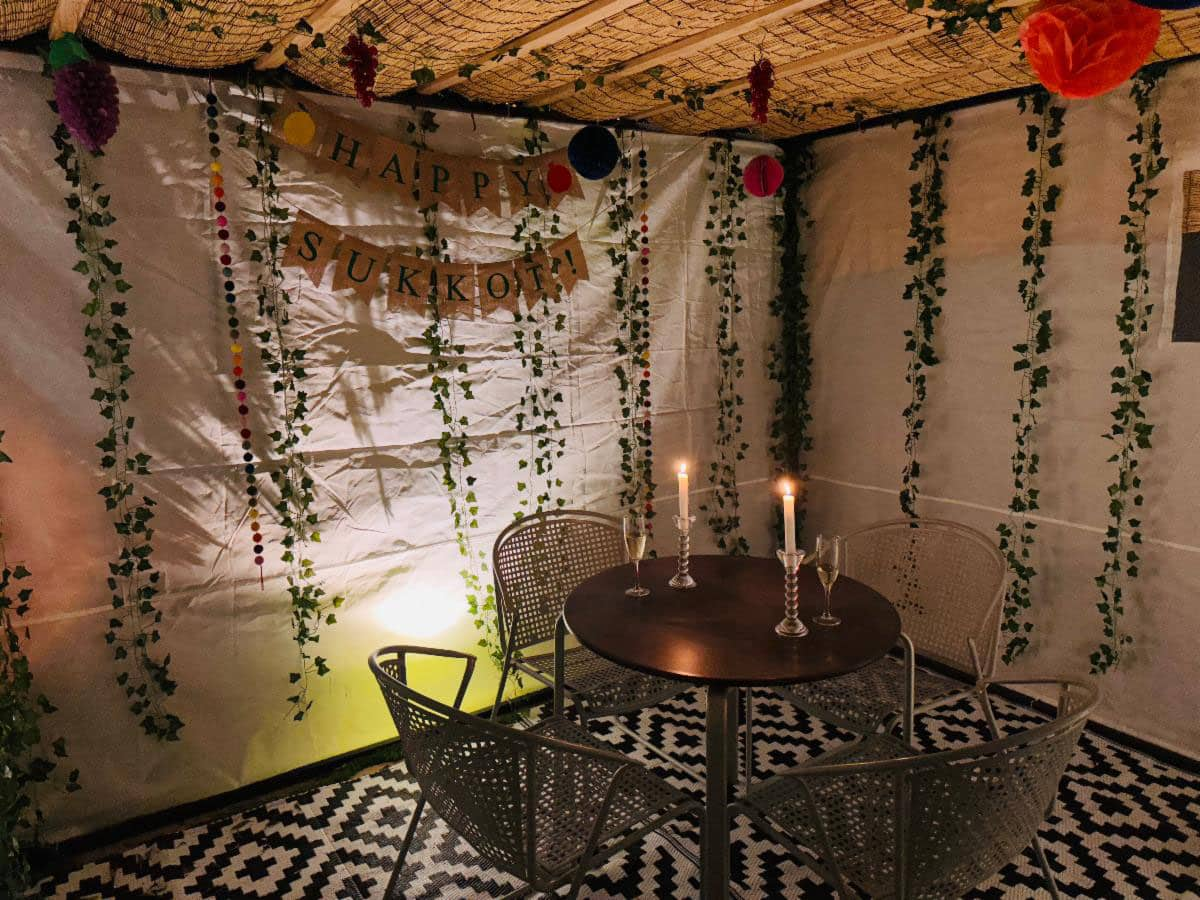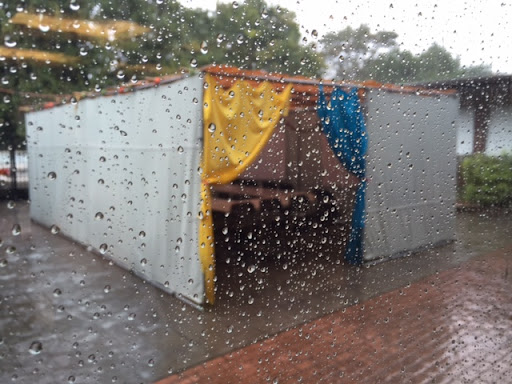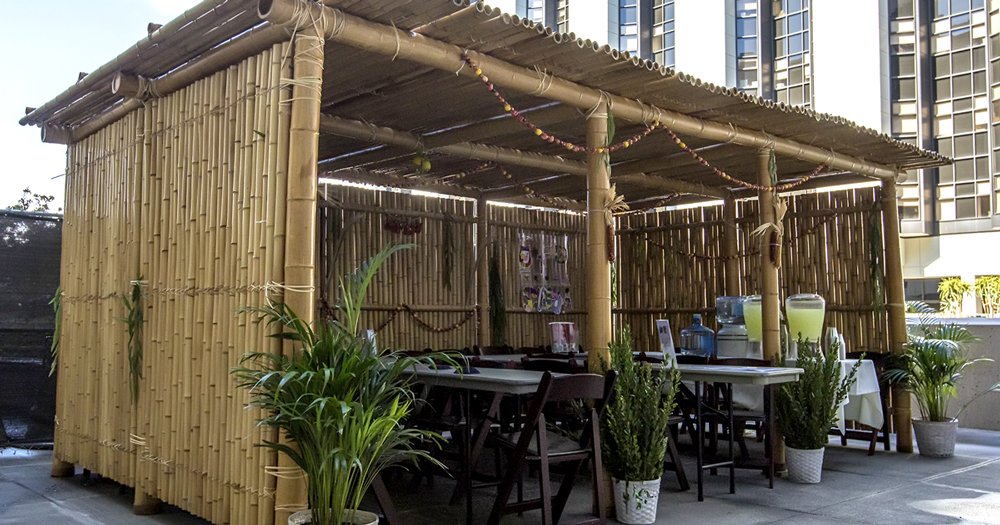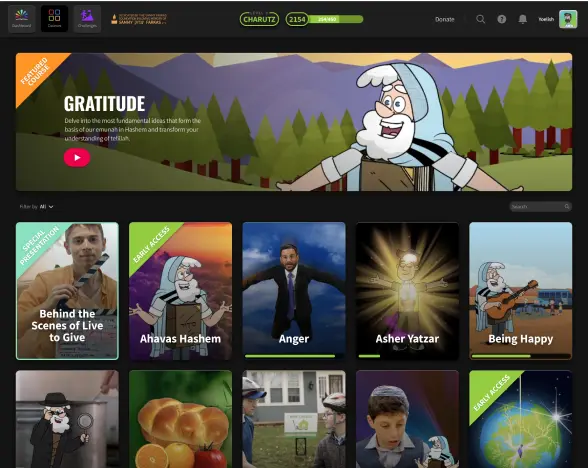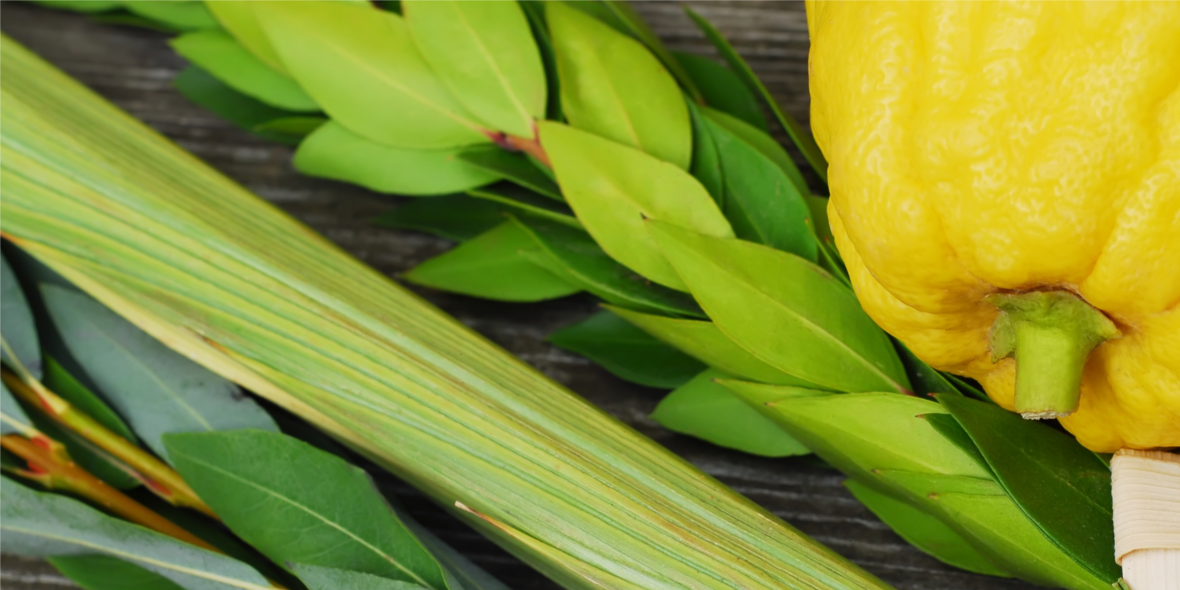
Sukkos: Step into the Clouds
Table of Contents
-
Introduction
-
What Were the Clouds of Glory?
-
The Mitzvah of Sitting in the Sukkah
-
Ushpizin: Welcoming Spiritual Guests
-
When the Sky Says No: Rain on Sukkos
-
The Four Species (Arba Minim)
-
Sukkos & Shemini Atzeres
-
Conclusion: Carrying Sukkos Forward
Introduction
Sukkos invites you into a world of meaning and mindfulness. More than a holiday—it’s a spiritual reset under literal roofs. When you sit in a sukkah, you step into forgiveness, unity, and Divine protection.
During Sukkos, we relive the return of the Clouds of Glory after Yom Kippur—an earth-shaking gift of Hashem’s closeness. We welcome spiritual guests through the custom of ushpizin. We bind ourselves together with the four species, celebrating unity in diversity. And with Shemini Atzeres, we extend our connection just one more day, in Hashem’s eyes.
In this blog, we’ll deepen your sukkos experience. You’ll see why every second under the schach is a mitzvah for your whole being, why guests matter, and how to carry this spiritual momentum into the rest of the year.
Get ready to make this sukkos more alive, more practical, and more connected than ever. Let’s dive in.
What Were the Clouds of Glory?
Let’s rewind the tape.
The Jewish people left Egypt surrounded by miracles: ten plagues, a split sea, manna from heaven. But one gift was quiet. Constant. And absolutely life-changing.
It was the Clouds of Glory.
These clouds weren’t just air-conditioning for the desert. They were Hashem’s visible protection—a Divine embrace. The Gemara (Sukkah 11b) teaches that when the Torah says we should “dwell in sukkos,” it’s not just about remembering huts. It’s about remembering these clouds.
But here’s the twist: the clouds didn’t stick around forever. When Bnei Yisrael sinned with the golden calf, the Clouds of Glory disappeared. Hashem’s presence, which had filled the camp, was no longer there in the same way.
So why do we celebrate Sukkos now, in Tishrei?
The Vilna Gaon explains something incredible. On Yom Kippur, Moshe Rabbeinu came down with the second set of luchos—and with them, Divine forgiveness. Just a few days later, on the 15th of Tishrei, Hashem gave us a sign that the relationship was fully restored: the Clouds of Glory returned. That’s the real reason we build our sukkos now. It’s a celebration of teshuvah. A celebration of Hashem taking us back completely.
These clouds weren’t just for show. The Ramchal (Derech Hashem, Part 4, Chapter 7) explains that they lifted us up—physically and spiritually—above the rest of the world. The Jewish people were placed into a supernatural zone. A space beyond nature. Because we’re not just another nation. We were chosen to be a spiritual lighthouse for humanity. The clouds reminded us: this is your place. Above the noise. With Hashem.
When we sit in the sukkah today, we step into that space again. Protected. Uplifted. Forgiven.
That’s not history. That’s now.
The Mitzvah of Sitting in the Sukkah
Most mitzvos need a hand, a mouth, or a mind.
The sukkah needs you. All of you.
When you walk into a sukkah, you’re surrounded by a mitzvah. The roof over your head, the walls around you, even the floor beneath your feet—all of it becomes part of a spiritual act. You're not just doing a mitzvah. You're living in one.
The Shulchan Aruch says that any time you do normal activities in the sukkah—eating, drinking, sleeping—you’re fulfilling a mitzvah. But it goes deeper than that. The Vilna Gaon and others teach that every second you’re sitting in a sukkah with the intention to fulfill the mitzvah, you’re earning reward—even if you’re not doing anything else. Just being there counts.
That’s wild when you think about it.
There’s no other mitzvah like it. You’re not saying anything. You’re not moving. You’re just being. And every moment counts.
Rav Chaim Volozhin explains that mitzvos have the power to connect the body and soul. In the sukkah, that connection is full-body, full-soul. Every limb is involved. You’re surrounded by holiness on all sides.
That’s why we don’t make a sukkah in our living room. We step outside—because the sukkah is a physical space that brings spiritual light into our world.
And it’s not just symbolic. The Zohar calls the sukkah “tzila d’mehemenusa”—the “shade of emunah.” When you sit in the sukkah, you’re putting yourself in Hashem’s hands, trusting Him to shelter you with something flimsy and fragile. You’re saying: “Hashem, I’m safe with You.”
In a world that tells us to build bigger, better, stronger—Sukkos says: strip it all down. Keep it simple. Trust the Source.
That’s the mitzvah. And that’s the mindset.
Ushpizin: Welcoming Spiritual Guests
Every Yom Tov has its own atmosphere. Sukkos has… guests.
Spiritual ones.
The custom of ushpizin comes from the Zohar which teaches that each night of Sukkos, a different exalted guest—an “ushpiza ila’a”—visits your sukkah. We’re talking about the spiritual giants of our nation: Avraham, Yitzchak, Yaakov, Moshe, Aharon, Yosef, and Dovid.
Why do they visit? Because they lived what the sukkah represents. Avraham was the ultimate host. Moshe led the nation under the Clouds of Glory. Dovid longed to build a home for the Shechinah. These guests bring their energy, their strengths—and a quiet reminder: live like us.
But ushpizin isn’t just about celestial VIPs. It’s a wake-up call to open your sukkah to real people too.
The Gemara (Taanis 20b) praises hachnasas orchim—bringing guests into your home—as one of the greatest forms of kindness. And on Sukkos, it’s even bigger. The Shulchan Aruch brings the importance of feeding others during the festival. The Mishnah Berurah there emphasizes that the joy of Yom Tov isn’t complete unless we share it with those who have less.
That’s not a detail. That’s the point.
The Zohar says that if someone fills their sukkah table but ignores the poor, the spiritual ushpizin won’t stay. Because these holy souls came to see joy that’s shared—not hoarded.
So what do we do?
Invite someone who might not have a place to go. Share a meal with someone new. Smile big. Bring joy. Every guest—physical or spiritual—adds light to your sukkah.
Because the real beauty of Sukkos isn’t the decorations. It’s the people inside.
When the Sky Says No: Rain on Sukkos
It’s the first night of Sukkos. The table is set. The lights are glowing. The soup is piping hot. And then—plop. A raindrop. Then another. Soon, the only thing simmering is your disappointment.
It feels like the whole moment is ruined.
And you’re not alone in feeling that way.
The Gemara says that if it rains on the first night and you’re forced to leave the sukkah, it’s like a servant bringing a cup to his master—and the master throws it back in his face. Ouch. Not exactly the cozy Yom Tov vibes we’re going for.
But before you get too discouraged, let’s take a step back.
Rain on Sukkos isn’t just a punishment or a rejection. It’s a reminder. A moment of truth. Hashem is telling us: I see your effort. But for reasons beyond your understanding, I’m not asking for this mitzvah from you right now.
So how do we flip this around?
Simple. If rain prevents us from doing the mitzvah, and that’s seen as a negative... then the flip side is incredible:
Every second it’s not raining, every moment we can sit in the sukkah, is Hashem saying YES.
Yes to your effort.
Yes to your presence.
Yes to your desire to serve Him.
Most of the year, we do mitzvos indoors, in private, with little feedback. But on Sukkos, Hashem gives us the weather as a subtle commentary. When the skies are clear and the breeze is just right, Hashem is smiling down on your sukkah. When you’re able to say kiddush under the stars and lean back in a folding chair surrounded by mitzvah walls, you’re hearing a Divine whisper: I love that you’re here.
Rav Moshe Feinstein (Igros Moshe, O.C. 3:99) pointed out that the sukkah teaches us a life skill—serving Hashem in less-than-perfect conditions. We eat with bugs. We sleep with squirrels. We try anyway. That effort is gold.
And even when it does rain, the effort still counts. The attempt to eat in the sukkah. The frustration. The walking in and out with bowls and blankets. It’s all recorded. It’s all cherished.
So don’t just look at the forecast. Look at the message.
If the sukkah is dry, Hashem is saying, “I want you here.”
And when it’s wet? He’s saying, “I see your heart.”
The Four Species (Arba Minim)
Picture this: you're holding a lulav and etrog, ready to shake. You might feel like you're waving plants around... but really, you're holding a masterclass in Jewish unity.
The mitzvah of arba minim—the four species—is one of the most iconic parts of Sukkos. Every day of Chol Hamoed (and the first day of Yom Tov, unless it falls on Shabbos), we take:
-
Lulav — a branch from a date palm
-
Etrog — a beautiful citron fruit
-
Hadassim — myrtle branches
-
Aravos — willow branches
Each one has its own look, smell, and personality. And our Sages teach that they represent different kinds of Jews:
-
The etrog has both taste and smell—like someone who has Torah learning and good deeds.
-
The lulav has taste but no smell—like someone with Torah, but who still needs to grow in how they live it.
-
The hadassim smell nice but have no taste—good deeds without deep learning.
-
And the aravos? No smell, no taste. But they're still part of the mitzvah.
Here’s the key: you can’t do the mitzvah without all four. If even one is missing, the whole thing’s off.
That’s not just halacha. That’s a message.
And this idea—that every kind of Jew belongs, even those who seem spiritually “empty”—isn’t just a poetic metaphor. It’s a deep Torah principle that shows up in other places too.
The Gemara in Taanis says something striking: if a community declares a public fast, and the people who are struggling with sin aren’t included, the fast doesn’t count. In other words, a fast day without the “sinners” is disqualified. Why? Because Hashem doesn’t want a curated collection of perfect people. He wants a full, authentic nation.
It’s the same idea we see with the arba minim. If you leave out the aravos—the willows with no smell or taste—you’ve missed the whole point. The mitzvah isn’t about showing off your finest fruits and fragrance. It’s about holding everyone close. Uniting people who learn, people who do, and even those who are just starting out.
The aravah isn’t a flaw. It’s a feature. It’s the reminder that not every Jew needs to be “finished” in order to be precious. Every single person has a role, a purpose, a value.
That’s why we bind the four species together—literally. Not side by side, but tied up tight. You can’t tell where one ends and the next begins. That’s community. That’s Klal Yisrael.
And when we shake them in every direction, we’re not just making a symbolic move. We’re saying, “Hashem, here’s all of us. Not just the best of us. All of us.” And that’s exactly what He wants.
Hashem didn’t want a nation of one flavor. He wanted a people that includes everyone—from the scholars to the simple, from the doers to the dreamers. Every Jew belongs. Every Jew matters. Even the ones who don’t “smell” or “taste” spiritual yet—they’re still part of the lulav bundle.
And don’t miss this: we don’t just hold the minim—we shake them in every direction. East, west, north, south, up, and down. Why? The sages teach that we’re proclaiming: “Hashem rules everywhere.” And we’re asking Him for blessing in all corners of our lives.
The four species remind us that unity isn’t about sameness. It’s about togetherness. Standing side by side. Facing every direction. Shaking the world with faith.
Sukkos & Shemini Atzeres
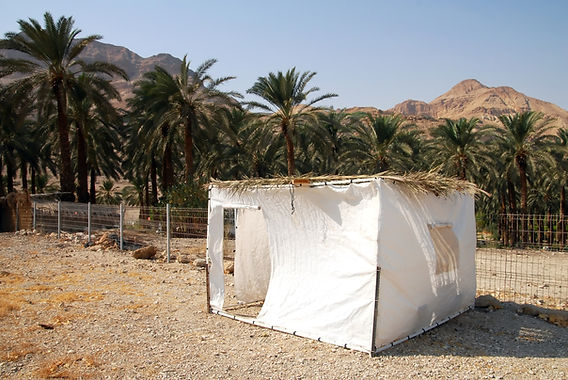
It’s the last day of Sukkos. You’ve waved your lulav. You’ve sung in the sukkah. Maybe your decorations are a little soggy, and your esrog’s got a scratch or two. But just when you think it’s time to say goodbye…
Hashem stops you.
The Midrash gives us the inside scoop. After the seven days of Sukkos, Hashem says:
“Kasheh alai preidaschem”—“It’s hard for Me to see you go.”
So what does He do? He gives us one more day. A private Yom Tov. No lulav, no sukkah, no symbols. Just us and Him.
That’s Shemini Atzeres.
The name itself says it all. “Atzeres” means to pause, to hold back. Hashem is saying, “Stay a little longer. Let’s just be together.”
The Lubavitcher Rebbe added a beautiful insight: Hashem isn’t only sad that we’re leaving Him—He’s sad that we’re leaving each other. After dancing together in shul, eating together in our sukkos, singing and laughing and learning… we go back to our regular routines. That separation hurts. So Hashem says: Don’t separate just yet. Stay united. Stay elevated.
Shemini Atzeres doesn’t come with external mitzvos. There’s no new object to hold, no special structure to build. And that’s the point.
All the previous days of Sukkos prepared us for this. The spiritual guests. The unity of the four species. The trust of sitting under the schach. Now, Hashem says: you’ve internalized it. You don’t need symbols—you are the message.
So when you’re dancing with the Torah on Simchas Torah, remember: you’re not ending anything. You’re carrying it all forward.
Speaking of which…
Conclusion: Carrying Sukkos Forward
The sukkah comes down. The decorations get packed away. The lulav dries out. And just like that, Sukkos is over.
Or is it?
Sukkos isn’t meant to stay in Tishrei. It’s meant to launch you into the rest of the year.
Think about it. At the biblical level, the next Yom Tov is Pesach—six whole months away. That means the energy of Sukkos has to last us through the long stretch of winter, through everyday ups and downs, through quiet moments when it feels like the Yomim Tovim are a distant memory.
So how do we carry it forward?
Start with this: remember the clouds. The Vilna Gaon reminded us that Sukkos celebrates Hashem taking us back after the chet ha’eigel. So when life gets messy, remember—Hashem never gives up on you. If the clouds came back then, they can come back now.
Keep inviting people in. Hachnasas orchim isn’t just for Yom Tov. Make your home a place where people feel welcomed, seen, and valued—just like they do in your sukkah.
Live with unity. The four species taught us that every Jew matters. Don’t lose that perspective in the noise of everyday life. Reach out. Be kind. Assume the best.
And keep doing small mitzvos with big intention. Sitting in a sukkah showed us that just being in the right place, with the right heart, can transform the moment. Bring that to your davening. Your learning. Your Shabbos table. Your parenting. Your friendships.
The Baal Shem Tov taught that a Jew has to serve Hashem with joy. And Sukkos? It’s zman simchaseinu—the time of our joy. But that joy doesn’t stay in the sukkah. It’s supposed to go with you. Into your living room. Your classroom. Your WhatsApp chats.
Take it with you. Carry it forward. Because sukkos may come to an end, but its light doesn’t.
< — Check out this amazing Sukkos course and review Hilchos Yom Tov so you’ll be all ready to go for the holiday. -– >
Wishing you and your family a beautiful, joyful, and uplifting Sukkos. Chag Sameach! 🌿✨



